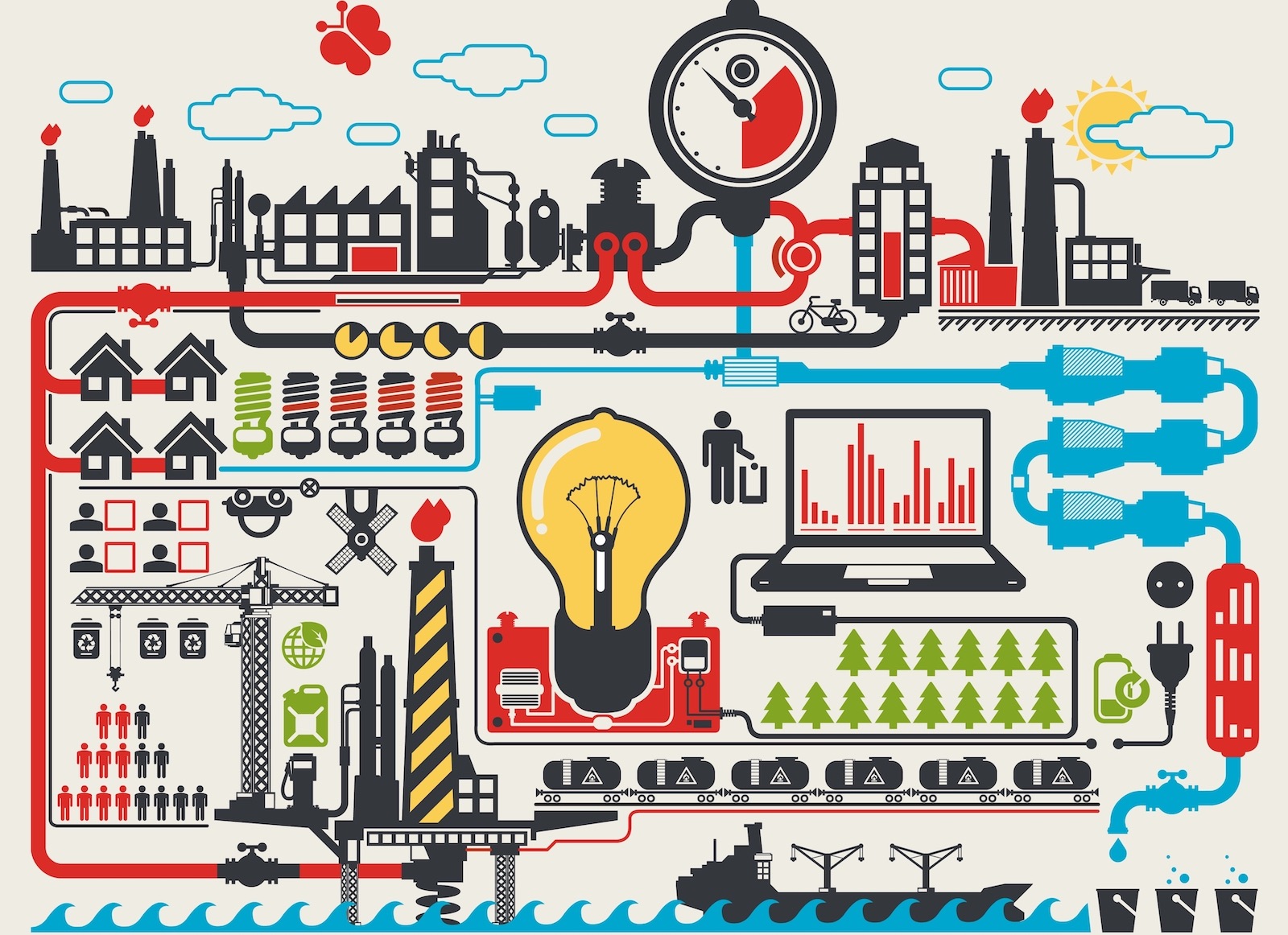A Swiss research team, from Ecole Polytechnique Federale de Lausanne (EPFL), have created an innovative smart building to smart grid system that promises to better optimize our energy use. The system, which collects data on people’s energy use and sends it to the grid, was simultaneously developed by several specialist teams from the university’s electronics department.
The concept behind this system is not particularly new but the Swiss team’s original approach could be a significant turning point in making it a reality. By enabling two way communication between buildings and the grid we can unleash the full power of the so called internet of energy (IoE), as discussed in our 2015 article: Smart Building + Smart Grid + Storage = The Internet of Energy.
The IoE is defined as an integrated dynamic network infrastructure based on standard and interoperable communication protocols that interconnect the energy network with the Internet allowing units of energy (locally generated, stored, and forwarded) to be dispatched when and where it is needed. The related information / data follows the energy flows thus implementing the necessary information exchange together with the energy transfer.
In other words, the IoE will generate optimal energy efficiency from energy resources through intelligent coordination from generation to consumption. The consumer and the power station are in continuous and automatic communication with one another, eventually every consumer could be in communication with every power station through a centralized system. With enough intelligence, such a system has the potential to optimize our energy system to unprecedented levels, drastically reducing overall energy use.
The EPFL system follows those lines. It can collect data on energy use in a building, office or even a room, using the wide variety of existing building sensors, mobile devices and wearables to create a profile of energy consumption behavior. The challenge was to create a solution that can communicate effectively with the broad range of sensory technology available and the multitude of protocols they use.
"There are a huge number of smartphones and connected devices available on the market, covering everything from household and leisure appliances to safety. They all use sensors, but the underlying technologies can be very different," explains George Lilis, who worked on the system’s interface as part of his Ph.D. "Our solution must be compatible with various technologies so that it can be connected to any device. That way, the building and the grid's energy needs can be managed smoothly regardless of the devices in place."
This information is then transferred to a smart grid system that aggregates all the data, anticipates energy needs, assesses generation capacity and optimally allocates available resources. From the supply side this likely means prioritizing renewable energy and stored renewable energy, for example. From the demand side it means providing consumers with the energy they need, when they need it, all the lowest possible price. The balance is generating as little as possible, as cleanly as possible, without risking the power supply to, or comfort of, the consumer.

The aim of a smart grid is to ensure that users get a top-notch service. This involves managing energy peaks and volatility in renewable energy output while at the same time keeping costs down and ensuring a constant level of comfort," said Olivier Van Cutsem, a doctoral student in the Electronics Laboratory, who is working on the project.
The team utilized a smart building simulator, also developed by the lab, to explore the advantages that integrating smart buildings could offer to the grid through two way energy data communication. "By looking at grid signals or available local output, we can adjust the load at certain times. An apartment could, for instance, be heated a few minutes earlier if the electricity is cheaper at that time or if that will curtail a peak in usage," added Van Cutsem.
In one of the more delicate elements of the process the researchers have to balance occupant health and comfort against energy consumption. Due to the way our indoor environment has evolved, especially our commercial indoor environment, more often than not comfort means energy consumption. Be it heating, cooling, ventilation or other factors, systems like this will have to be provided strict guidelines for acceptable environmental control limits for occupant health and comfort.
“There is also some room for maneuver in terms of the comfort that users are willing to accept. We know that people tend to heat their apartments to between 22 and 26 degrees Celsius, so we could opt for the lower end of the scale when the grid is busy,” says Cutsem.
The EPFL’s track record of innovation and success over a broad spectrum of technologies shines brightly on the future of this potentially disruptive project. "Our laboratory brings its expertise in electronics; our researchers are working on how to improve energy metering, communications between connected devices, and data collection and use, in order to enhance coordination between buildings and the grid," explains Lilis.
“Energy and buildings markets are beginning the tricky process of harmonization as major global firms look to capitalise on opportunities surrounding smart grids and distributed energy,” we said in our report Smart Buildings Meet the Smart Grid. It is exciting projects like this that underline the key message of that report, “the harmonization of the energy and buildings markets has begun!”
[contact-form-7 id="3204" title="memoori-newsletter"]



